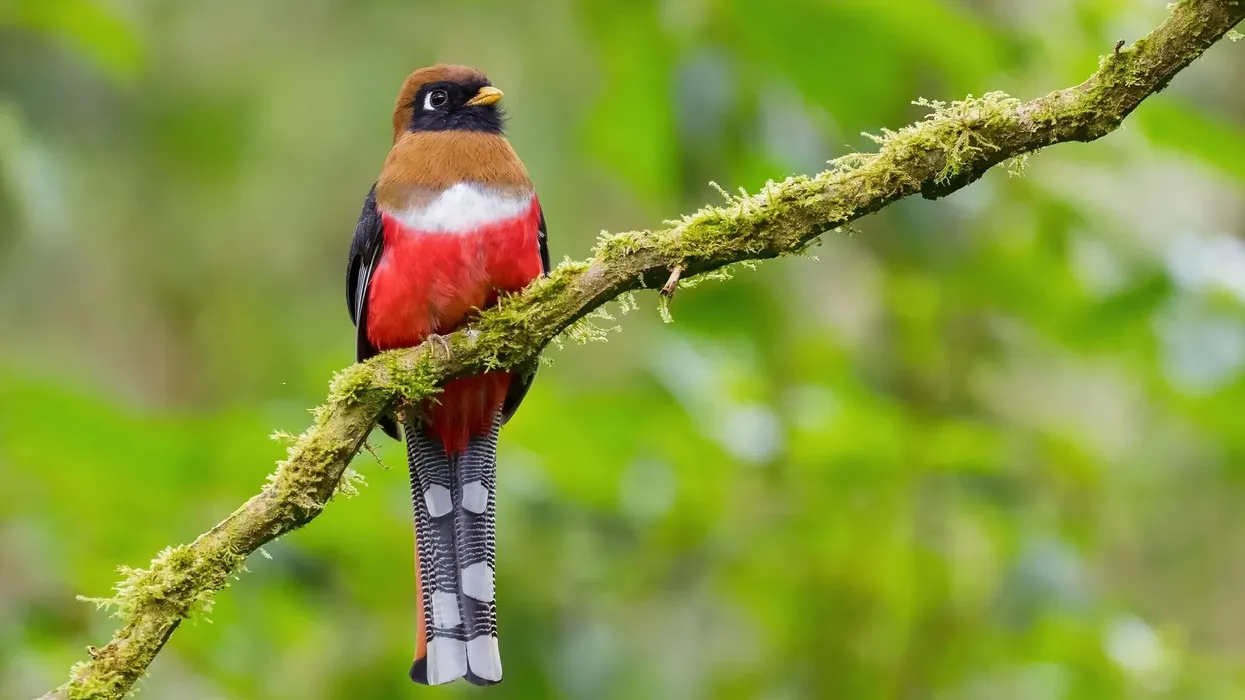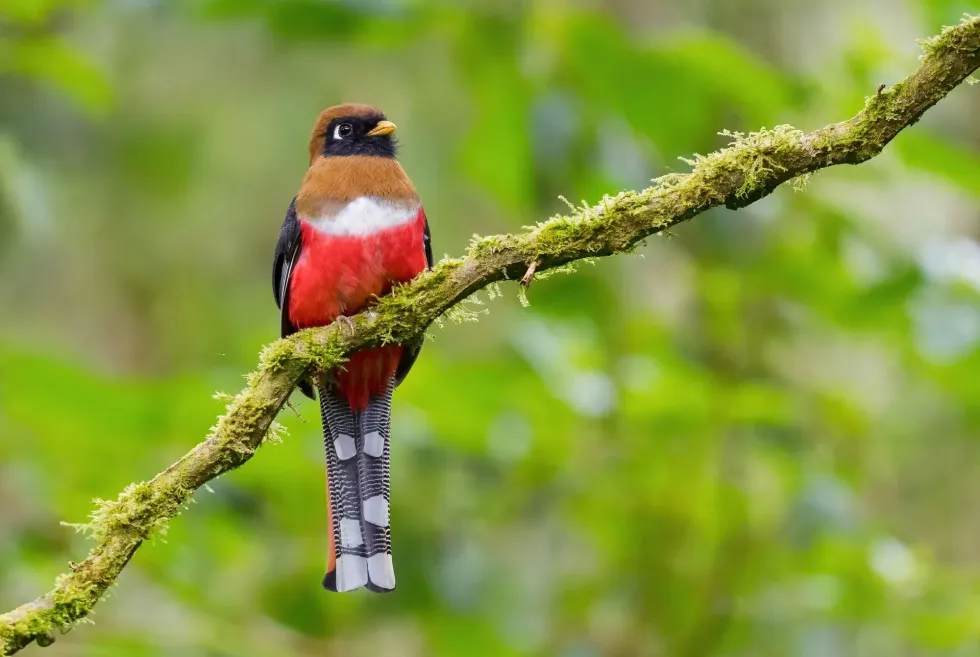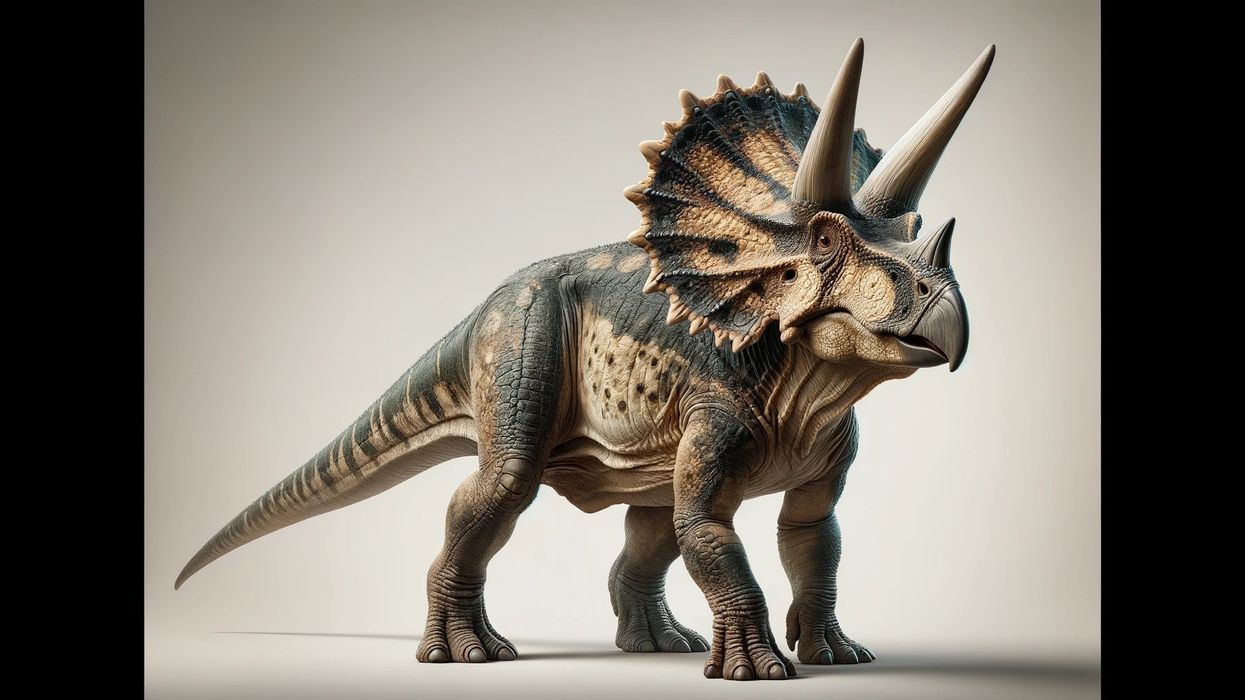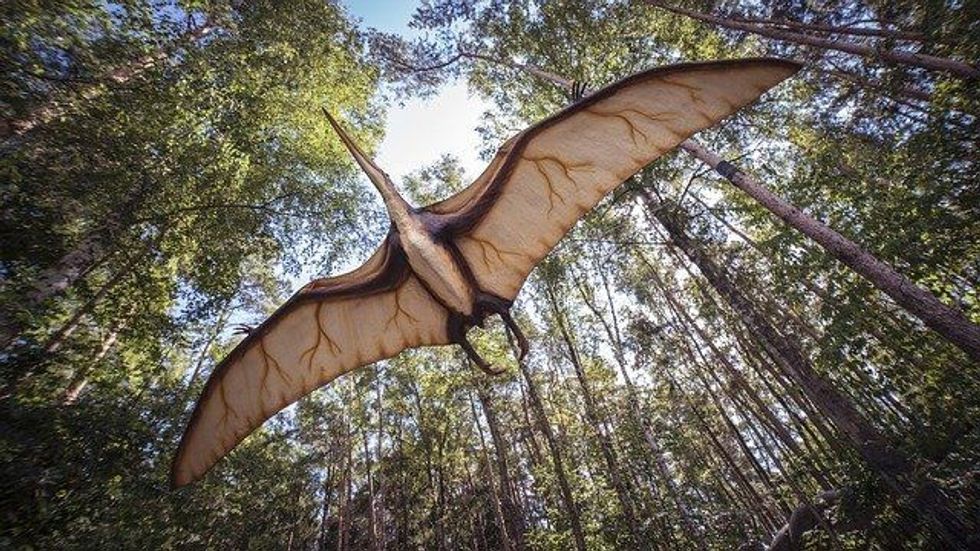Popularly called Trogón Acollarado in Spanish, the collared trogon (Trogon collaris) is also famous as the red-bellied trogon owing to its bright red underparts. The collared trogon has been classified into numerous subspecies such as T. c. exoptatus, T. c. puella, and T. c. collaris.
The near passerine collared trogon is a tropical bird with an extensive population distribution throughout several regions of the Neotropics. If you're an enthusiastic birdwatcher, you can search for T. c. exoptatus in the forests of Trinidad and Tobago.
Collared trogons (Trogon collaris) have a unique defense mechanism against predatory mammals and hawks. They are adept at the art of camouflage! Trogons move about from one branch to another and tend to remain motionless most of the time to avoid detection.
They project their greener backs while tucking away the brighter underparts, also maintaining vigilance on potential predators. Trogons can spin their heads at 180 degrees just like an owl. This helps them to keep vigilance on other birds without being spotted.
If you want to know more about the unique collared trogon continue reading. Don't forget to peek into the African spoonbill and honey buzzard.
Collared Trogon Interesting Facts
What type of animal is a collared trogon?
A collared trogon (Trogon collaris) is a species of Old World bird belonging to the order Trogoniformes, composed of the sole family Trogonidae.
What class of animal does a collared trogon belong to?
Collared trogons (Trogon collaris) have been categorized under the Aves class and Trogon genus.
How many collared trogons are there in the world?
We cannot make any conclusive assertions regarding the number of adult collared trogons owing to the lack of data but the population distribution has been projecting a decreasing pattern.
Where does a collared trogon live?
As a native, the collared trogon can be located in South and Central America. Mexico, western Ecuador, northern Colombia, Trinidad and Tobago, and Venezuela are abundant in the bird population.
The distribution of the subspecies T. c. exoptatus is widespread in Trinidad and Tobago, northern Venezuela, and northern Colombia. In fact, the forests of Trinidad also boast the beautiful Guianan trogon.
What is a collared trogon's habitat?
The habitat of the collared trogon (Trogon collaris) includes subtropical as well as tropical forests. They tend to inhabit lowland evergreen forests. They can also be found in semi-deciduous, pine evergreen, and montane forests.
Who do collared trogons live with?
Trogon collaris can be often spotted in flocks, especially while foraging for insects.
How long does a collared trogon live?
The average lifespan of Trogon collaris (Trogon collaris) is not yet known.
How do they reproduce?
The collared trogon (Trogon collaris) is known to be monogamous. Breeding largely depends on the climate and location. Generally, the males engage in courtship by engaging in aerial displays and singing to appease the females. They are particularly aggressive towards other male opponents.
After copulation, the nest is built in a termite nest or cavity of rotting wood. A female lays two to three white eggs. The incubation period ranges anywhere between 16-19 days. The hatchlings are blind and featherless.
What is their conservation status?
According to the current data publicized by the International Union for Conservation of Nature (IUCN) Red List, the population distribution of the collared trogon (Trogon collaris) is ample throughout its habitat range qualifying the species to the Least Concern category.
Collared Trogon Fun Facts
What do collared trogons look like?
Male and female collared trogons exhibit unmistakable differences in their plumage color. While the males have a green breast, back, and head with a white band separating the breast from its red belly, the females are brown on their back, breast, and head with paler underparts.
Unlike the black-tailed trogon that possesses a bluish-gray tail, the collared trogon (Trogon collaris) comes with a broad bill, small feet, and a long black tail with white vermiculations.
How cute are they?
These colorful birds are a treat to the visual senses and very beautiful in appearance.
How do they communicate?
Generally, collared trogons (Trogon collaris) let out innumerable loud calls. Calls include whistles and hoots. Apart from alarm calls, they're known to produce breeding calls and aggression calls during the breeding season. Aggression calls are directed towards the other competing males while the breeding calls have been identified between both males and females. Common calls sound like 'caow-caow'.
How big is a collared trogon?
The average length of the Trogon collaris is about 9.8 in (25 cm). The species is smaller than the national bird of Cuba, the Cuban trogon measuring about 10-11 in (25.4-28 cm). Even the slaty-tailed trogon is larger with an average length of 12 in (30.48 cm).
How fast can a collared trogon fly?
The collared trogon (Trogon collaris) prefers to remain inactive, concealed among trees in the forest cover. Flights are uncommon except for foraging and feeding. Although the speed range of the species is unknown, the collared trogon (Trogon collaris) can fly fast.
How much does a collared trogon weigh?
This comparatively small-sized collared trogon species weighs around 0.13 lb (60 g).
What are the male and female names of the species?
A male collared Trogon collaris is called a cock while a female is regarded as a hen.
What would you call a baby collared trogon?
A baby collared Trogon collaris is generally called a nestling, hatchling, or chick.
What do they eat?
The diet of the collared trogon (Trogon collaris) comprises a variety of invertebrates and fruits. Insects like hairy caterpillars, cicadas, crickets, beetles, and stick insects form an essential part of their diet.
Are they dangerous?
The collared trogon (Trogon collaris), from Trinidad and Tobago is known to be territorial as well as aggressive towards competitors, especially during the breeding season. Interactions with humans have been limited since the tree-dwelling tropical bird can rarely be traced.
Would they make a good pet?
Trogons are exotic forest-dwelling birds of the Trogonidae family. Additionally, several countries strictly prohibit the rearing of wild birds as pets.
Did you know...
Residents of the warm tropical forests, the collared trogon is mostly sedentary and does not migrate. However, the bird navigates within the local range.
The Spanish Trogón Acollarado is preyed upon by hawks and predatory mammals like caviomorphs, tree rats, and marsupials.
How many types of trogon are there?
There are around 43 species of trogons that have been further classified into six genera.
This species of trogon is not endemic to any particular area.
What does trogon mean?
The term 'trogon' has its roots in the Greek language where 'trogon' implies 'nibbling'. The Old World bird species engages in gnawing at trees to make cavities where they can construct their nest. The name has been attributed due to this nibbling action. Fossil specimens of these historical birds bear evidence of their existence 49 million years ago!
Here at Kidadl, we have carefully created lots of interesting family-friendly animal facts for everyone to discover! Learn more about some other birds from our mountain pygmy owl fun facts and moustached warbler interesting facts pages.
You can even occupy yourself at home by coloring in one of our free printable Cuban trogon coloring pages.
Second image by Instituto Últimos Refúgios










